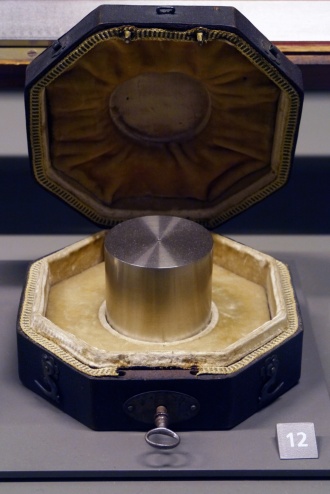This is the last article you can read this month
You can read more article this month
You can read more articles this month
Sorry your limit is up for this month
Reset on:
Please help support the Morning Star by subscribing here
HOW much is one kilogram? The answer, it turns out, is “about one kilogram…but not quite.” In just a few months, the definition of 1kg will be fundamentally changed, thanks to an international conference of scientists in Paris last November.

Defining 1kg might seem like an abstract philosophical question, but it’s also a practical one. When Marx wrote Das Kapital, he explained “A sugar-loaf being a body, is heavy, and therefore has weight: but we can neither see nor touch this weight” (Chapter 1). To weigh anything requires a system of standards for measurement.
Marx goes on to talk about how one can define weight using a particular piece of iron. Weighing is then a relation into which “sugar or any other body, whose weight has to be determined, enters with the iron.” The value of everything that we buy stands in relation to money, just like the weights of many different things we might compare stand in relation to the lump of iron. You might ask: but how much does the iron weigh? Where does the chain of relation stop?
At the moment, it stops with a lump of platinum known as the International Prototype of the Kilogram (the IPK), kept under lock and key in a Paris suburb. The IPK was the kilogram, and has been since 1889. But that is not to last.
Defining the kilogram with a single object had made scientists increasingly uneasy over the years. The kilogram is one of the seven fundamental physical units: some familiar (the kilogram, the second, the metre), some less so (the mole, the ampere, the kelvin, and the candela). All other physical units of measurement can be expressed in terms of these seven. Relying on a particular object for something supposedly fundamental had come to seem oddly parochial.
It was for this reason that at the General Conference on Weights and Measures at the end of 2018, delegates voted unanimously to remove the privileged status of the IPK and redefine the kilogram using a relationship between fundamental physical constants of nature instead; things which can be measured by independent experiments, rather than an ageing artefact.
And the IPK is indeed showing its age. Incredibly, it has gained weight over the years: even though made of platinum to prevent rusting, the presence of small amounts of air had still caused the inevitable adhesion of air molecules onto its surface, increasing its mass by around 50 micrograms.
At first glance, it seems like a laughable story: boffins convening an international conference to split hairs — literally: a single human hair weighs around 0.5 milligrams, so the discrepancy is around a hundredth of that — about something that has no relevance to everyday life. But precision has become increasingly important in scientific research.
The incredible achievement of “bootstrapping” to increasingly precise measurements of physical properties is a demonstration of technological progress. Each advance, although apparently inconsequential at everyday scales, can represent years of research and signifies our growing understanding of what matter is, and how to manipulate it.
The new definition of a kilogram is given by taking a measurement of a physical constant known as Planck’s constant, which relates the energy of light to its wavelength. By giving Planck’s constant a pre-defined numerical value, scientists have effectively set the value of a kilogram in terms of the properties of the universe, rather than a trip to Paris to weigh a lump of platinum. The kilogram also now implicitly depends on the definitions of the second and the metre, themselves defined in terms of physical constants in the same way.
Some have called the redefinition a redemocratisation. Rather than depending on access to a specific object — such as Marx’s particular lump of iron or the IPK — scientists can now make their own measurements all over the world. Still, for practical economic purposes, nothing has changed since Marx wrote Das Kapital. As is the case in other areas as well, of course.
Science and Society, the new column from Joel Hellewell, Rox Middleton and Liam Shaw, will run fortnightly.











